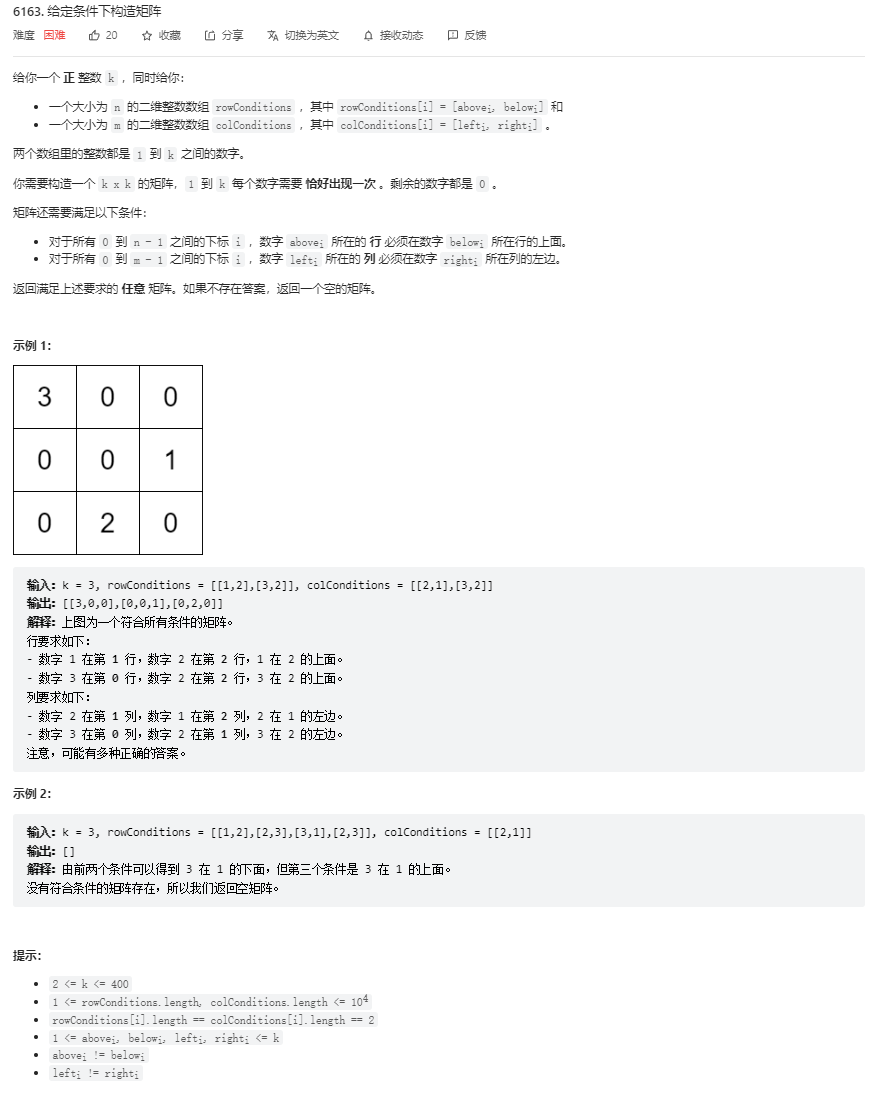
题目分析
本题是308周周赛的第四题,有一定的难度,考察了拓扑排序的知识点,给定一个有向图,能否将这个图进行排序。
拓扑排序
我们先分析这个题目,rowConditions和colConditions表示行和列之间的关系。比如[2, 3],2出现的行数在3出现的行数之前。
而且我们可以推出本题的行和列是相互独立的,假设行是[1, 3, 2],列可以是任意的
- 比如列是[1, 3, 2],则结果为
$$ \begin{bmatrix} 1 & 0 & 0 \\ 0 & 3 & 0 \\ 0 & 0 & 2 \end{bmatrix} $$
- 比如列是[3, 1, 2],则结果为
$$ \begin{bmatrix} 0 & 1 & 0 \\ 3 & 0 & 0 \\ 0 & 0 & 2 \end{bmatrix} $$
- 比如列是[3, 2, 1],则结果为
$$ \begin{bmatrix} 0 & 0 & 1 \\ 3 & 0 & 0 \\ 0 & 2 & 0 \end{bmatrix} $$
因此我们要做的是根据行和列的关系,找到从大到小排序的数组。然后根据x,找到x所在的行和列的索引,放在相应的位置即可。
在根据有向图寻找排序数组的过程,我们称之为拓扑排序,就是将图进行排序。
拓扑排序的思路类似于BFS,用degree表示入度的值,有x条边指向某个节点,某个节点的入度就是x。入度为0的点,说明是最起始的点,可以将其排在最大值。因为没有边指向该点,所以没有点大于它。
因此先将入度为0的点加入到队列中,然后开始遍历,找到某个点,将某个点的入度-1,如果入度更新到0,也将其加入到队列中,先加入队列的元素是排在前面的序号,因此加入到队列的同时,也要添加到拓扑排序的结果数组中。
算法的时间复杂度为$ O(k \times max(m, n)) $,空间复杂度为O(max(k^2, m, n))。
1 | class Solution { |
刷题总结
今天又学习到了新知识——拓扑排序,小伙伴们课后一定要多加巩固,找一些拓扑排序的题目练手。